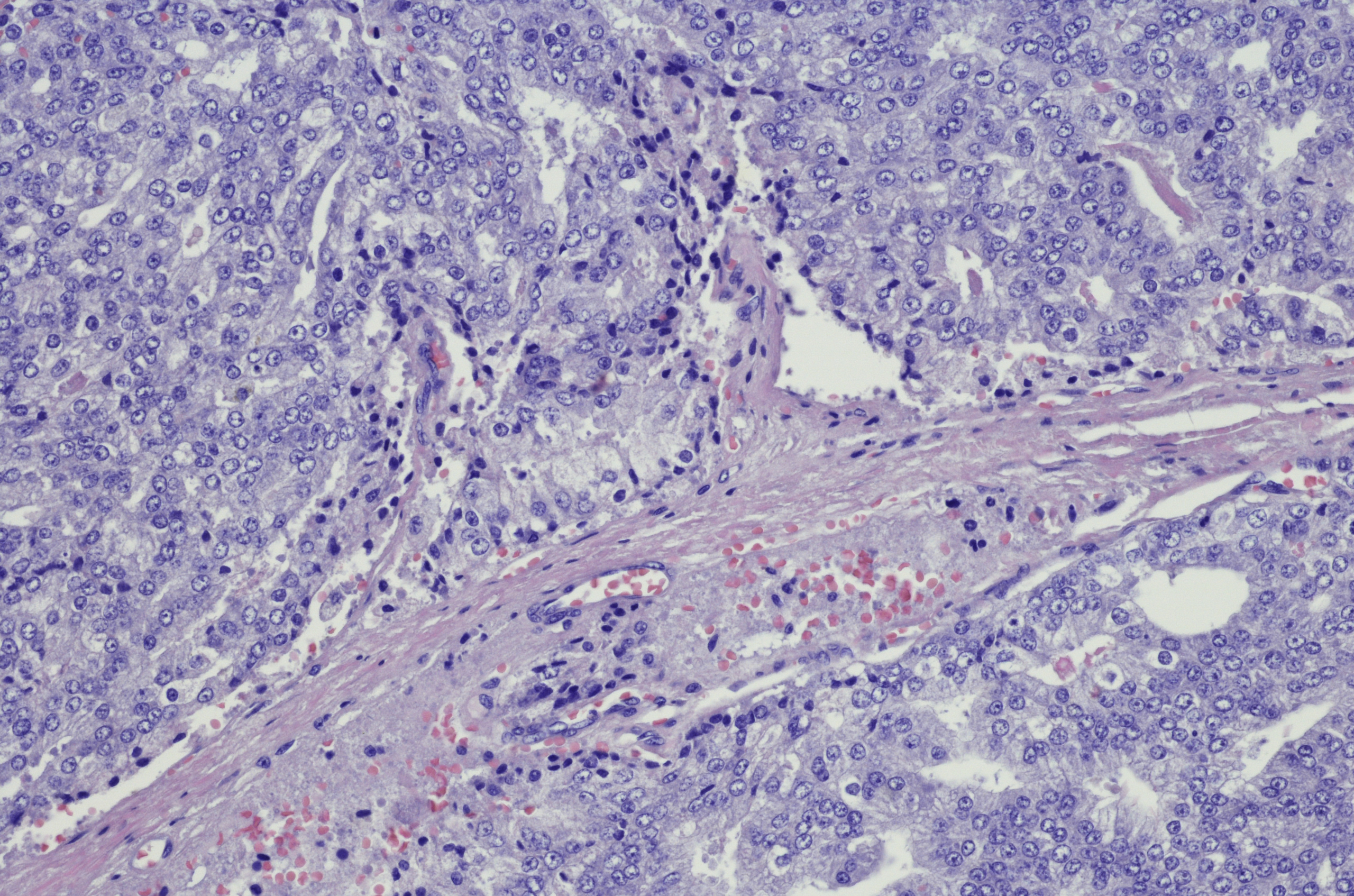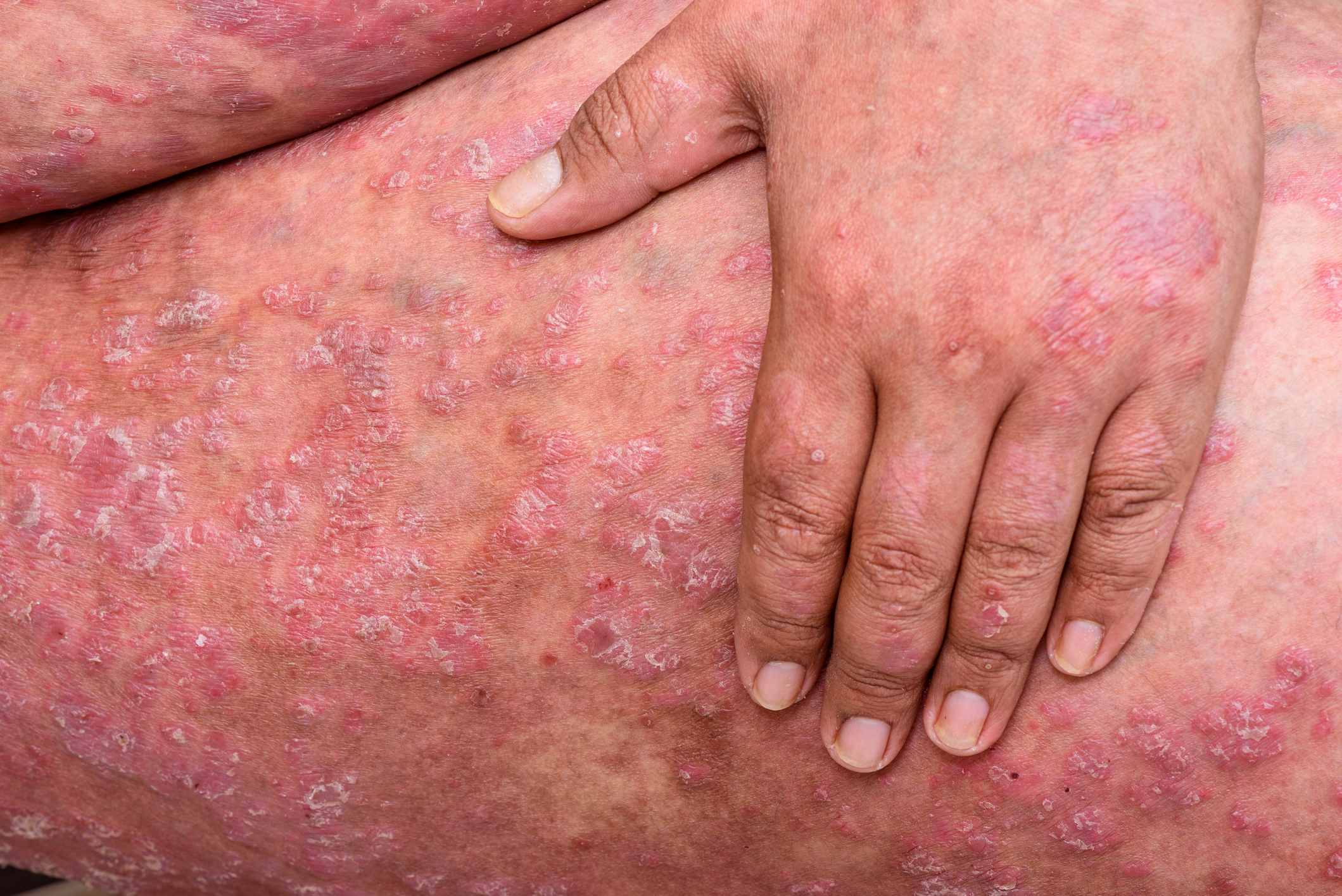The latest advances in the field of hematology were the focus of this year’s annual meeting of the European Hematology Association in Madrid. Experts discussed research data on various diseases of the blood, blood-forming organs, lymph nodes and the lymphatic system.
Vitamin C (VitC) is a co-factor for the important epigenetic regulator TET2. However, patients with hematologic cancer often suffer from vitamin C deficiency. Acquired epigenetic alterations are a hallmark of myeloid malignancies, and TET2 loss mutations are a common cause of leukemogenesis. Therefore, VitC supplementation could be an attractive therapeutic strategy for patients with early-stage myeloid malignancies and precursor diseases. It should therefore be investigated whether oral VitC supplementation is safe and can alter molecular and clinical disease characteristics and outcomes in patients with low-risk myeloid malignancies – i.e. low-risk myelodysplastic neoplasms (MDS; IPSS-R score ≤3) and MDS/myeloproliferative neoplasms (MDS/MPN) – and the precursor disease clonal cytopenia of undetermined significance (CCUS) [1]. The primary endpoint of the randomized, placebo-controlled Phase II study was the change in the allele frequency of somatic mutations in bone marrow mononuclear cells from baseline to the end of treatment.
Between 2017 and 2022, 55 patients were randomized to the vitC group and 54 patients to the placebo group at four centers. The VitC concentration in peripheral blood plasma was insufficient (<50 μmol/L) in 57% of the study participants at the start of the study. In the VitC group, there was a significant increase in the median VitC plasma concentration from 45.85 μmol/L at baseline to 81.90 μmol/L after 12 months, while no statistically significant changes in VitC concentration were observed in the placebo group. A total of 31 SAEs occurred in 15 of 55 patients (27%) in the vitC group and 57 SAEs in 23 of 54 patients (43%) in the placebo group. At the end of the study, the median follow-up time was 33.5 months (range 0-70.0 months), and 35 deaths had occurred (vitC group, n=11; placebo group, n=24). The median OS was not reached in the vitC group and amounted to 42.2 months in the placebo group. In the multivariable analysis, oral vitC treatment was also statistically significantly associated with a longer OS compared to placebo.
Increased hemoglobin due to NFKB1
Tibetans, Ethiopians and Andeans have been studied in detail for their evolutionary genetic adaptations to the lack of oxygen at high altitudes. At high altitude, Tibetans and Ethiopians have hemoglobin (Hb) levels comparable to those at sea level, while Andeans have higher Hb levels than Europeans living at the same altitude. Tibetan selection of two genetic variants in the hypoxia-inducible factor (HIF) genes, EPAS1 (HIF-2a) and EGLN1 (prolyl hydroxylase 2), has already been found to correlate with their lower Hb levels (Science 2010, Nat Gen 2014). A previous whole genome sequencing study identified strong selection signals in the BRINP3, NOS2 and TBX5 genes that were associated with cardiovascular function and development, but could not explain elevated Hb levels. Transcriptome analysis should now be used to identify genetic signatures for high Hb levels in Aymara [2].
A total of 2601 differentially expressed genes and 1922 spliced genes were identified in Aymaras, which were associated with immune, inflammation and hypoxia-related signaling pathways. Their cis-genetic regulators were analyzed in terms of quantitative expression traits and quantitative splicing traits (sQTLs). Novel transcripts were found with skipped exon 4 or 5 or both exons in NFKB1 (AS-NFKB1), a key part of the NF-kB signaling pathway that contributes to suppression of the inflammatory pathway and activation of HIFs. AS-NFKB1 lacking exon 4 or exons 4 and 5 is not converted to protein, while AS-NFKB1 with skipped exon 5 is converted to protein but is improperly converted to p50 and is unable to translocate correctly to the nucleus. The AS-NFKB1 transcripts thus cause a partial loss of canonical NFKB1 function as a suppressor of NF-kB. These AS-NFKB1 transcripts were associated with 5 sQTLs and were enriched in Aymara compared to other populations. Among these 5 sQTLs, rs230511 was the most frequently selected single nucleotide polymorphism (SNP) in Aymara. AS-NFKB1 transcript levels and the T allele (Aymara-enriched allele) of rs230511 correlated positively with elevated Hb in Aymara. They also correlated with transcript and protein levels of NF-kB-regulated inflammatory genes such as interferon gamma and interleukin 6. While increased inflammation suppresses erythropoiesis through the upregulation of hepcidin, which also correlated with AS-NFKB1 transcript levels, AS-NFKB1 was also found to correlate with marked upregulation of many HIF-regulated genes. HIFs are the master regulators of increased erythropoiesis, which collectively explain Aymara erythrocytosis. These results suggest that the increased HIF transcriptional activity leading to Aymara erythrocytosis overcomes the suppression of erythropoiesis by increased inflammation modulated by AS-NFKB1.
Dynamics of the proteome in HSC
Delineating the cell intrinsic and extrinsic drivers of hematopoietic stem cell (HSC) self-renewal is critical for improving ex vivo HSC expansion and for better understanding the biology of leukemia cells. Loss-of-function mutations in the epigenetic regulator TET2 are frequently observed in myeloproliferative neoplasms (MPN). It is assumed that they confer an increased self-renewal potential to HSCs, which leads to clonal growth of the mutated cells. At the transcriptional level, Tet2 mutations are associated with altered gene expression in mouse HSCs. However, relatively few genes responsible for MPN development and progression have been identified to date, and transcriptomic approaches have had limited success in identifying novel therapeutic targets. Although numerous tools have now been developed to study the genome and transcriptome at single-cell resolution, the paucity of HSCs in mouse and human tissues has prevented global characterization of the cellular and extracellular proteome of HSCs. Parallel advances in ex vivo HSC expansion and low-input proteomics bring us to the threshold of breaking this decades-old barrier and significantly expanding our understanding of self-renewal factors in normal and malignant hematopoiesis.
The aim was to perform proteomic profiling of freshly isolated or ex vivo expanded normal and Tet2-deficient HSCs and to characterize soluble factors in the cell microenvironment in vivo and in culture to generate a comprehensive molecular map of intra- and extracellular self-renewal factors in normal and premalignant HSCs [3].
Miniaturized, multiplexed sample preparation protocols were applied in combination with mass spectrometry-based quantitative proteomics to compare normal and Tet2-deficient HSCs, as well as data-independent acquisition (DIA)-MS to characterize the extracellular environment of normal and premalignant HSCs in vivo and during ex vivo expansion. Both the cellular and secreted proteome were shown to accurately stratify HSCs based on their functional potency and mutational status, identifying novel molecular components not captured in transcriptomic analyses. On the pre-leukemia side, it has been observed that Tet2-deficient HSCs exhibit altered expression of extracellular matrix (ECM) proteins and that interaction with these proteins in artificial niches influences cell function. Extracellular proteomic analyses also show that Tet2-deficient cells create a microenvironment that is pro-inflammatory and pro-thrombotic even in young, asymptomatic animals. In HSC expansion assays, proteomics identifies the need for intact DNA repair pathways as key components of HSC clones capable of extensive self-renewal compared to unsuccessful expansion cultures. Consistent with this, functional assays show that the DNA repair enzyme Parp1 and the m6A demethylase Fto play a key role in ex vivo HSC expansion. Analysis of the secretome of unsuccessful cultures also shows that mast cell proteins predict failure of expansion of transplantable HSCs, while secretome analysis of clones that can be transplanted in vivo in the long term indicates high hemoglobin concentration as an indicator of culture success.
TP53 mutations in CLL
Somatic TP53 mutations are common in cancer and drive disease progression and resistance to therapy. In chronic lymphocytic leukemia (CLL), mutated TP53 leads to poor response and shorter survival. However, the prognostic significance of the various mutations, the clone size and the simultaneous occurrence of other genetic changes under different therapies is unclear. The aim of a study was therefore to describe the landscape of TP53 mutations in CLL and to investigate their prognostic significance in clinical trials, taking into account genetic risk factors and the type of treatment [4].
1824 TP53 alterations were identified in 1368 patients, including 336 patients in the efficacy cohort. TP53 mutations were single nucleotide variants (78%), deletions (12%), splice site mutations (6%) and other 4%.TP53-mutated patients had one (77%), two (15%) or more variants (8%). U-IGHV was prevalent in 78% of TP53-mutated cases, del(17p) in 51%. At a median observation time of 65.7 months, TP53-mutated patients from the efficacy cohort had poorer PFS and OS compared to wild-type. These adverse effects were observed for variants within and outside the DNA binding domain. Gain/loss of function mutations, splice site or nonsense mutations, and missense mutations with pathogenic prediction were equally associated with shorter survival. In contrast, missense variants of unknown significance and mutations leading to partial p53 activity did not worsen the prognosis compared to TP53 wild type. Minor TP53 mutations(allele proportion of the variant <10%) were associated with a shorter OS, but not with a shorter PFS, which suggests an influence on the subsequent therapy.
Congress: European Hematology Association (EHA)
Literature:
- Mikkelsen SU, et al: VITAMIN C SUPPLEMENTATION IN PATIENTS WITH CLONAL CYTOPENIA OF UNDETERMINED SIGNIFICANCE OR LOW-RISK MYELOID MALIGNANCIES: RESULTS FROM EVI-2, A RANDOMIZED, PLACEBO-CONTROLLED PHASE 2 STUDY. Abstract LB3444, European Hematology Association (EHA), 13-16.06.2024 Madrid.
- Song J, et al: ELEVATED HEMOGLOBIN OF ANDEAN AYMARAS IS CAUSED BY ALTERNATIVELY SPLICED NFKB1. Abstract LB3441, European Hematology Association (EHA), 13-16.06.2024 Madrid.
- Yassinskaya M , et al: INTRA- AND EXTRACELLULAR PROTEOME DYNAMICS DURING NORMAL AND MALIGNANT HEMATOPOIETIC STEM CELL EXPANSION. Abstract LB3443, European Hematology Association (EHA), 13-16.06.2024 Madrid.
- Bertossi C, et al: THE LANDSCAPE OF TP53 MUTATIONS AND THEIR PROGNOSTIC IMPACT IN CHRONIC LYMPHOCYTIC LEUKEMIA. Abstract S101, European Hematology Association (EHA), 13-16.06.2024 Madrid.
InFo ONKOLOGIE & HÄMATOLOGIE 2024; 12(4): 28–29












